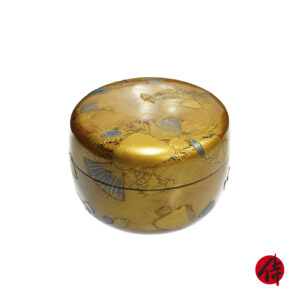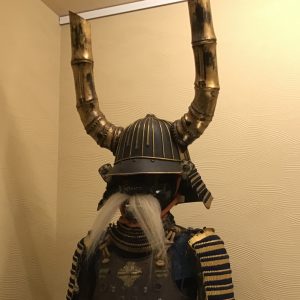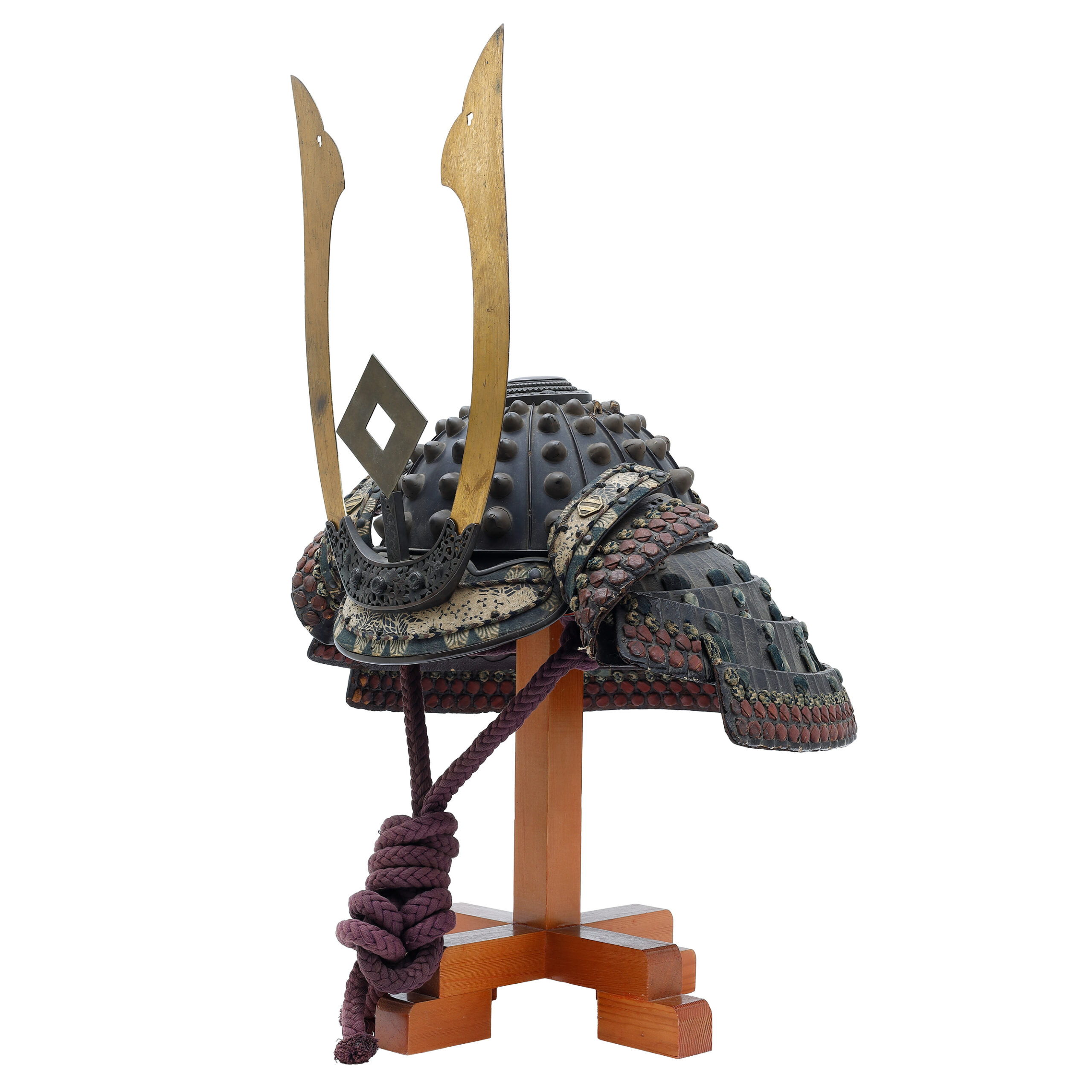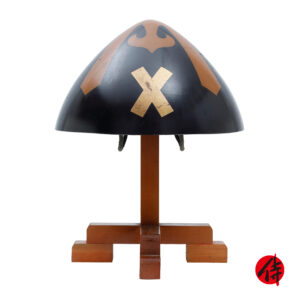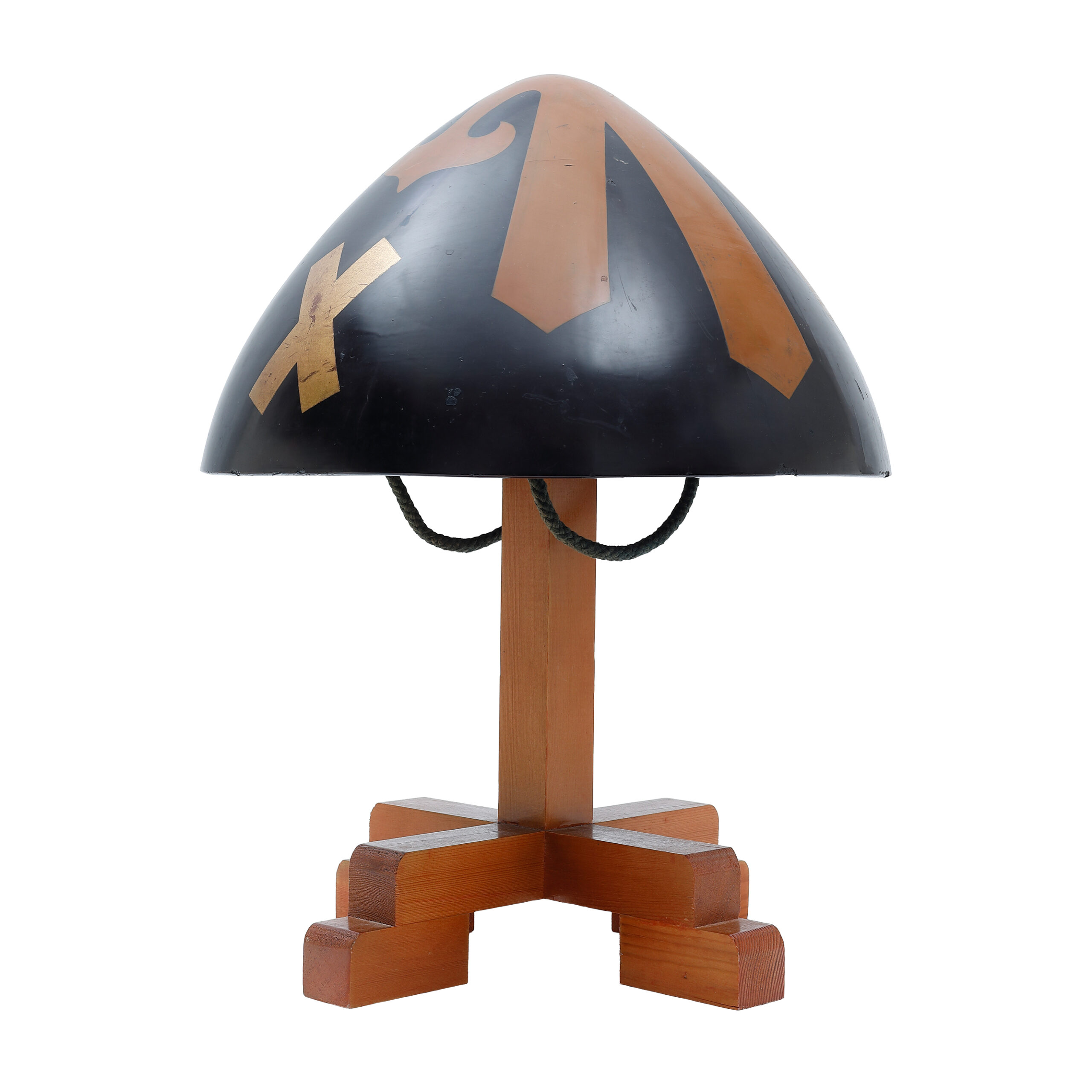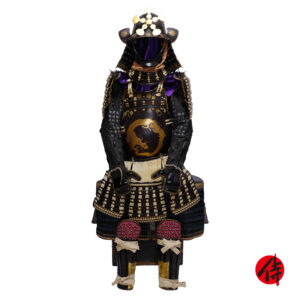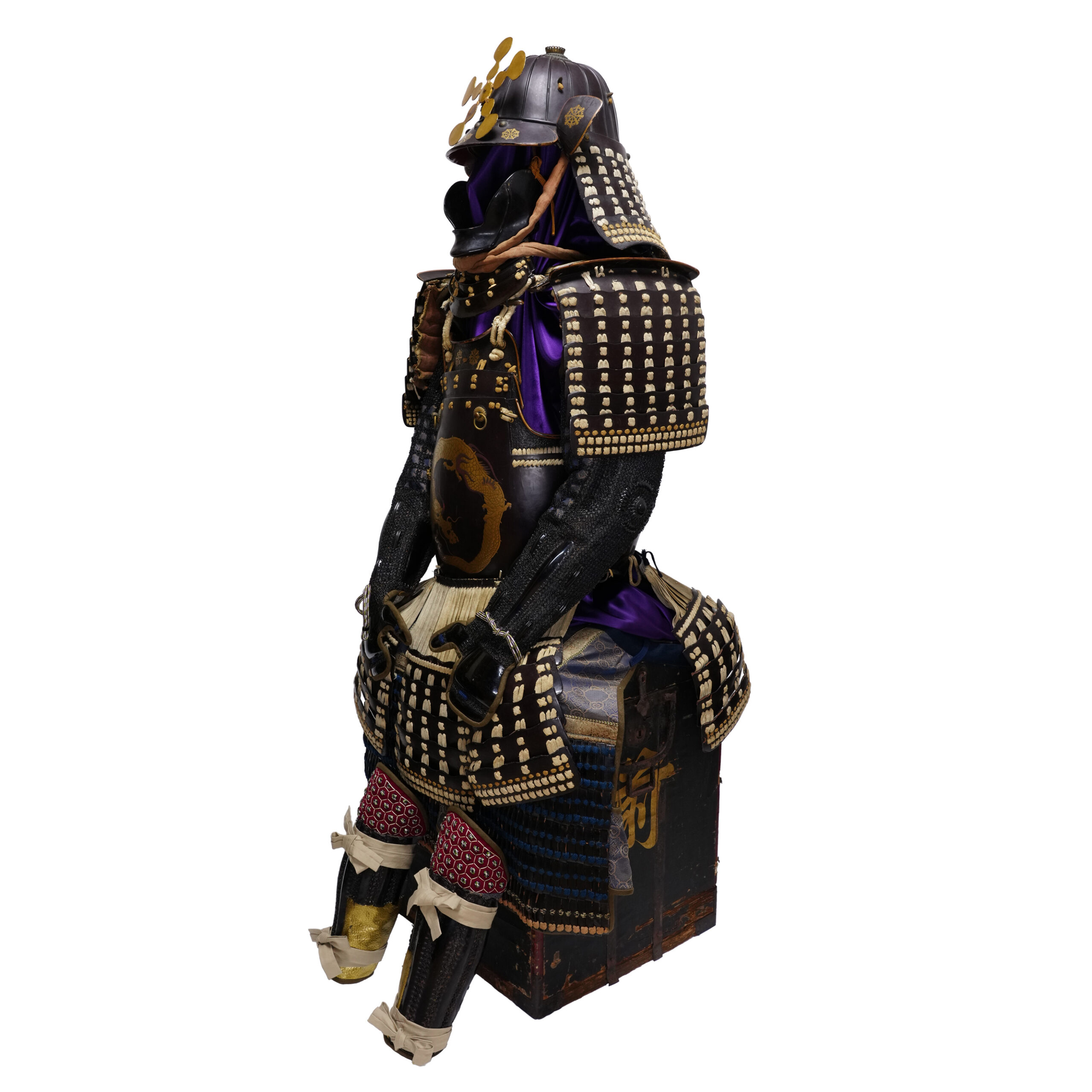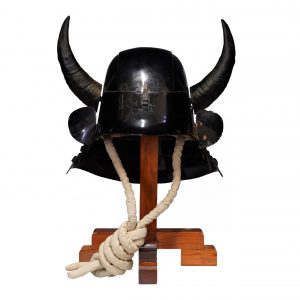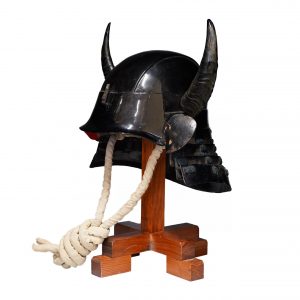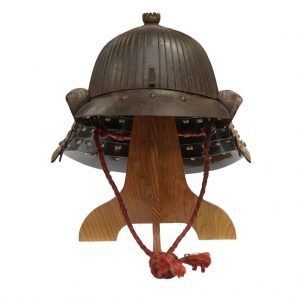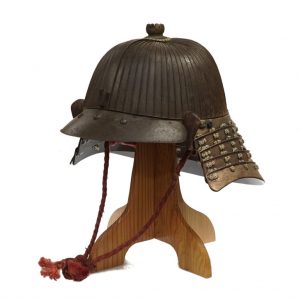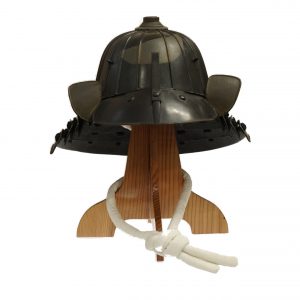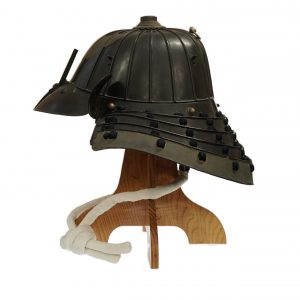Antique Samurai Helmet Rokujuni Ken Koboshi Kabuto with Tokubetsu Kicho Shiryo Certificate

Period: The beginning of the Edo Period (1615-1637)
appraised by The Association for the Research and Preservation of Japanese Helmets and Armor
Prime Material: Iron
This Kabuto’s style is the Koboshi Kabuto (小星兜), which is categorized as the Hoshi Kabuto (星兜), and it has Rokujuni (sixty two in Japanese) iron plates. The Hoshi Kabuto is a type of Samurai helmet that was born in the middle of the Heian period (around 888-1068). Small rivets that hold iron plates together. These rivets are called the Hoshi (星, star). In the Edo period, artisans made Kabutos not only Kawari Kabutos (please check the paragraph below) but also ancient-style Kabutos. For example, in the case of the Hoshi Kabuto, the Hoshis become smaller toward the top of the head; this form is called the Rinotori (厘劣り). It differs from the old-fashioned Hoshi Kabuto, in which all the Hoshis were the same size.
The Kabuto is a protector of the head. When people started using the Kabuto, it was initially designed for practical use. However, the principal purpose of its design has changed with time; Samurai warriors tried to express their dignity, personality, or religion by wearing the characteristic designed Kabutos. According to a theory, these uniquely designed Kabutos were made from the late Muromachi (室町, 1336-1573) to the Edo period (江戸, 1603-1868). This type of Kabuto is categorized as the Kawari Kabuto (変わり兜), and a variety of materials were used to create them. For example, animal fur, seashells, plants, and paper were used as materials for decorations.




Also, the Fukikaeshi (吹き返し), both ends of a Kabuto, is attached to this Kabuto. It protects the face from swords. The parts of this Kabuto, including the Fukikashi, are black-lacquered, which is called the Kuro Urushi (黒漆).

In addition, the Hachimanza (八幡座, helmet top opening) is shaped like a chrysanthemum (菊, Kiku). A long time ago, the chrysanthemum was used as a medicine for obtaining a long life in China, and it was brought to Japan with this thought in the Nara period (648-781). Chrysanthemum is one of the flowers which symbolizes fall, and people appreciate it very much since ancient times. As its petals form radially, the chrysanthemum has been likened to the sun. That is why this flower pattern is treated as the symbol of perpetual youth and longevity or good health. “Kiku no Gomon (菊の御紋)” is a kind of chrysanthemum pattern, and it has been used as the crest of the Emperor and the royal family in Japan so that it is well-known as a noble pattern.
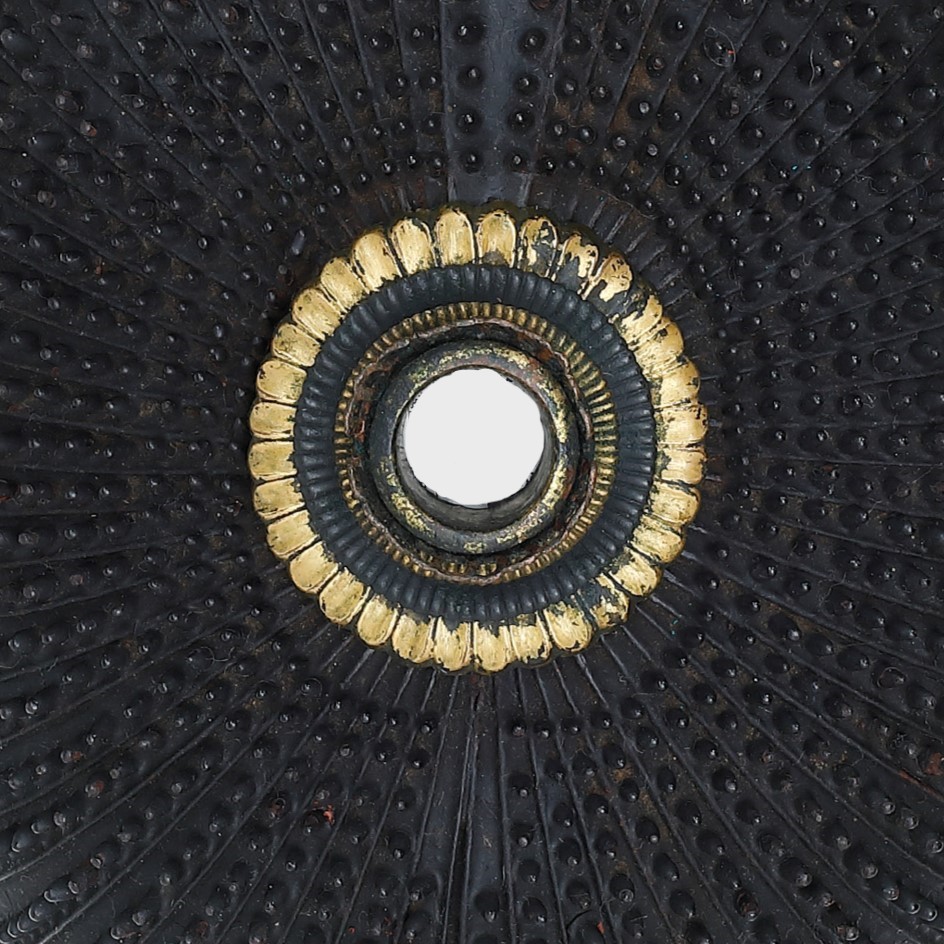
*Please keep in mind that this Kabuto’s lacquer is partly lacked off.
Certification: Tokugetsu Kicho Shiryo Certificate
The certificate was issued by The Association for the Research and Preservation of Japanese Helmets and Armor, which is the most trusted Japanese armor appraiser in Japan. Tokubetsu Kicho Shiryo means special rare article. It is ranked as the third highest of five rankings.
This helmet was authenticated on May 3rd, 1993, as a Tokubetsu Kicho Shiryo, and this paper mentions that this item was made in the early Edo period.
An English translation of the certificate is available on request. We won’t charge any additional fee.


【About us】
Samurai Museum is located in Tokyo, Japan, exhibiting antique artifacts related to the Samurai history. Samurai Museum Shop is the place for those who are interested in Japanese culture and craftsmanship. We deal with antique Samurai swords/armor, traditional crafts made in Japan and so on.
【Antique Japanese helmet (Kabuto) and Export process】
After receiving the full payment from you, we will apply for its export permit from the Board of Education to legally export the helmet to other countries. It normally takes around 2-4 weeks to receive this permit. And we would like you to expect at least 1.0-1.5 months for your order to arrive at your given address after you ordered.
【Payment Method】
We accept payment through Stripe (Credit card), PayPal, Apple Pay or ChromePay, all of which are secure payment methods. Also, you don’t need to make an account on Stripe for the checkout. If you prefer other payment method, please contact us. After confirming your payment, we will apply for an export permit. You may either pay in JPY, USD, AUD, CAD, EUR, CHF or GBP. The price is set in Japanese Yen. Prices in other currencies are automatically calculated based on the latest exchange rate.

【Shipping Duration】
We normally ship via EMS (Express Mail Service) provided by Japan Post. It usually takes at least 5-14 days to deliver the package after you place an order.
We offer Free International Shipping as long as we can ship your order by EMS. If you prefer other shipping carriers, please contact us.
We will inform you of the order’s tracking number via email. Please make sure you fill out your valid email address correctly.
*If you like to make sure if EMS shipping is available to your country, please contact us.

【How to make sure the condition】
Please keep in mind that what you are going to purchase is an antique item. We uploaded high resolution photos for you to check its condition thoroughly. If you like to see more photos with different angles, please feel free to contact us. We will be happy to send them to you so that you can make informed decision. It is essential for us to know that you are happy with your choice of a sword. and we are prepared to use the best of our ability to serve you.
【How To Contact Us】
Please contact us through email, Facebook Messenger or Live Chat if you have any questions. You can find each icon on the right side of the website. Please click one of them to reach us. We will reply to you within 1-2 business days.
【How To Preserve Antique Samurai Armor/Helmets】
Dryness, humidity, and bad ventilation might deteriorate the condition of antique Samurai armor/helmet. The best temperature to preserve Samurai armor/helmet is around 20℃ in Celsius, and humidity should be about 60%. Direct sunlight should be avoided. We recommend storing armors/helmets in a room with good ventilation. If you like to display them outside the boxes for a prolonged time, we suggest using a glass case in order for dust not to be accumulated easily. In case you don’t use a glass case, please make sure to regularly dust off from the armor/helmets by using a soft brush made of delicate cloth or brush for painting.
If you like to know more about the preservation of this armor, please feel free to contact us.




